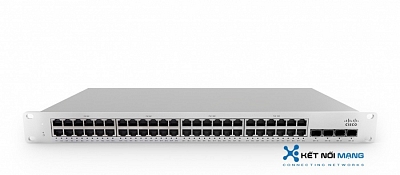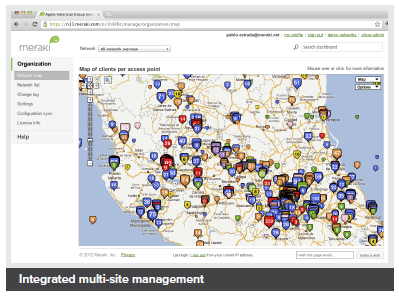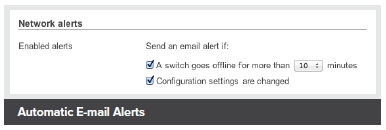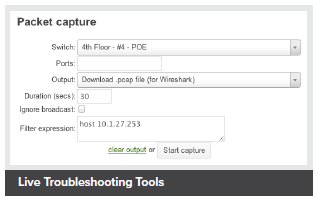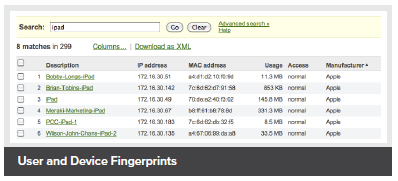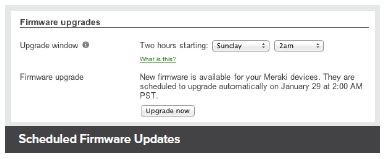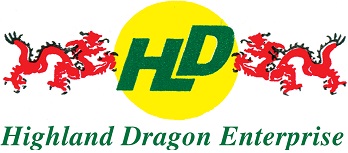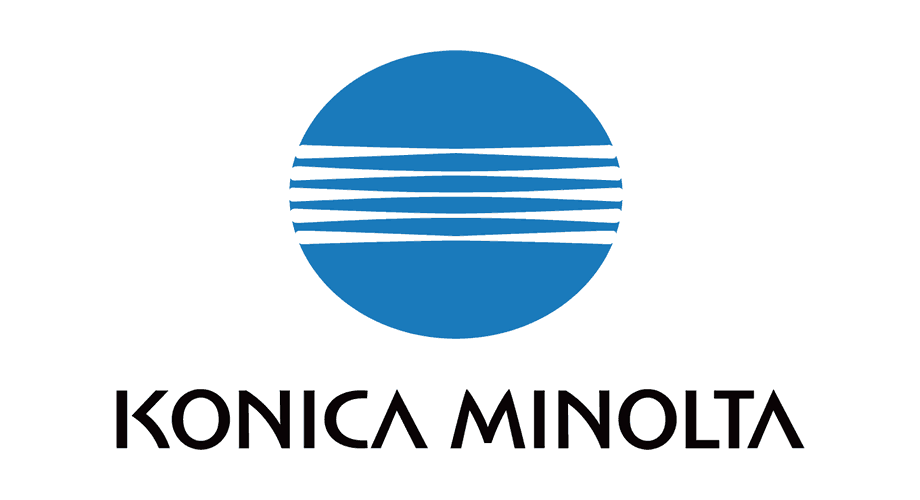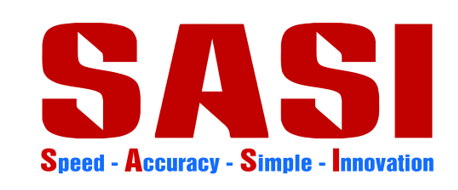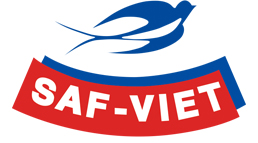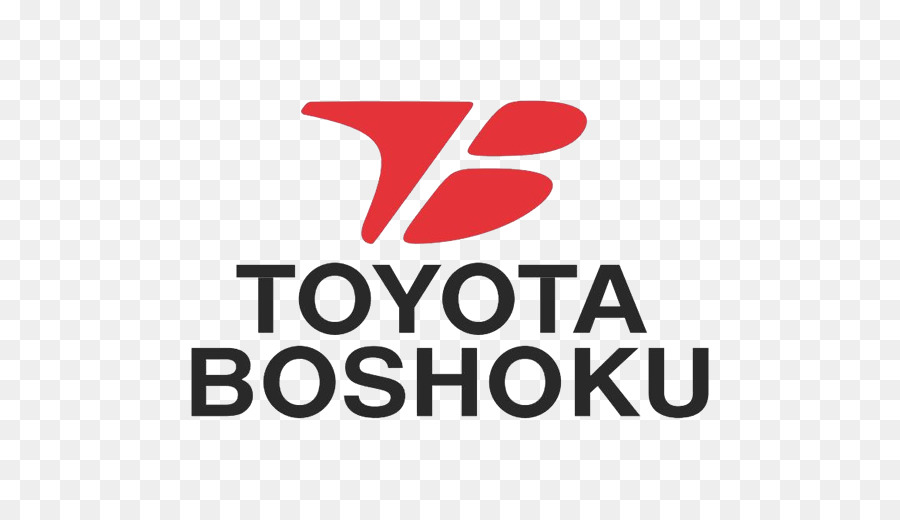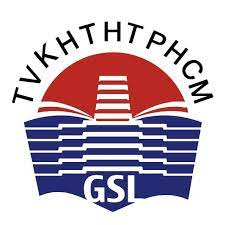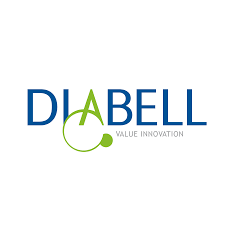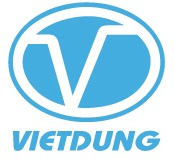Cisco Meraki MS120-48FP Switch
Cisco Meraki MS120-8 Switch
Cisco Meraki MS125-48FP Switch
Cisco Meraki MS125-24 Switch
Cisco Meraki MS120-48LP Switch
Cisco Meraki MS125-48 Switch
Cisco Meraki MS120-8LP Switch
Cisco Meraki MS125-48LP Switch
Cisco Meraki MS125-24P Switch

Cisco Meraki MS210-48 Switch
Liên hệ ngay
Overview:
Cloud-Managed Stackable Access Switches
Cisco Meraki MS210 switches provide Layer 2 access switching for branch and small campus locations. The MS210 includes 4 x 1G SFP uplinks and physically stacks with the MS225 to gain access to its 10G uplink. This family also supports an optional, rack-mountable PSU (Cisco RPS-2300) for power redundancy requirements
Cisco Meraki switches are built from the ground up to be easy to manage without compromising any of the power and flexibility traditionally found in enterprise-class switches.
The Meraki MS is managed through an elegant, intuitive cloud interface, rather than a cryptic command line. To bring up a Meraki switch, just plug it in; there’s no need for complicated configuration files or even direct physical access to the switch.
Meraki's centralized management gives administrators deep visibility into the network and how it’s used. See which switches are near capacity across hundreds of sites. Find all configuration changes made by a certain person with instant search.
Industry Leading Cloud Management
Cloud management has a number of benefits that make it easier to build networks large and small:
- True zero-touch device provisioning.
- Virtual stacking: manage up to thousands of ports from a single pane of glass.
- Application layer visibility with automatic operating system, client, and hostname fingerprinting.
- Powerful Live Tools such as packet capture and cable test to isolate and troubleshoot network issues.
- Alerts upon power loss, downtime, or configuration changes.
- Role-based administration and automatic, scheduled firmware upgrades over the web.
- Regular feature updates and enhancements delivered on demand from the Meraki cloud.
MS210-24 Highlights
- Access to 10G uplink by physically stacking with the MS225
- Gigabit Access switching with 24 and 48 port models and optional PoE+
- 4 x 1G SFP uplink interfaces on all models
- Built-in dual stacking interfaces with up to 80G bandwidth
- Non-blocking switch backplane with up to 176 Gbps bandwidth support
- Up to 740 watt PoE budget with PoE+ support and dynamic power allocation for powering APs, phones, cameras, and other PoE-enabled devices
- 6 dedicated QoS queues for converged voice, video, and data applications
- Low power consumption and shallow rack depth options, enabling flexible deployment in wiring closets as well as offices and classrooms
- Integrated mounting brackets for rack and desk mounting
- Lifetime hardware warranty and advanced replacement at no additional cost
Features:
Meraki switches include all of the traditional Ethernet features found in modern enterprise access switches, including:
Branch & Campus Access
- Physical stacking with support for up to 8 stack members for built-in redundancy, performance, and access to 10Gbps uplinks when stacked with an MS225 switch
- Quality-of-Service (QoS) to prioritize mission critical traffic such as voice and video
- Voice VLAN support for simplified VoIP deployments
- CDP, LLDP advertisement and snooping, with detailed neighbor discovery and visibility
- Port Mirroring support for monitoring network traffic at line rate
- IGMP Snooping to optimize network performance for multicast applications
- Link Aggregation Control Protocol (LACP) for high-capacity trunking, with Multichassis (MLAG) support on stacked switches
Network Security
- IEEE 802.1X, MAB, and Hybrid authentication support for wired access control with RADIUS server monitoring
- Port security and MAC whitelisting
- Change of Authorization (CoA) and RADIUS accounting support
- DHCP snooping to prevent users from adding unauthorized DHCP servers on the network
- Rapid spanning tree, BPDU guard, root guard, and other safeguards to help prevent misconfigurations and reduce convergence time
- Per port VLAN configuration
- Multiple administrative roles with sophisticated security policy management
Network Troubleshooting & Automation
- Virtual Stacking lets administators manage up to thousands of ports in a single interface without having to physically connect stack members
- Configuration templates for rapid, zero-touch provisioning and auditing of all sites
- Network Topology for automatic and interactive network mapping
- Remote cable testing, packet capture and client discovery
- Automatic and scheduled firmware upgrades for the complete network
Converged Voice, Video and Data Environments
The Meraki switch family is designed to unify data, voice, and video onto a single IP backbone. All Meraki switches support rich qualityof-service (QoS) functionality for prioritizing data, voice, and video traffic. The switches support eight class-of-service (CoS) queues on every port, enabling them to maintain end-to-end traffic prioritization.
PoE models provide power VoIP telephones, IP security cameras, wireless access points (APs), and other IP devices. In addition, using CDP and LLDP, PoE power is intelligently budgeted to maximize the number of PoE clients supported. For the most power-hungry applications, support for Cisco UPoE is also available. The Meraki MC products work flawlessly with Meraki switches, and create a unique and powerful experience to installing, supporting and troubleshooting VoIP technology
Application Layer Visibility
Meraki is the only switch to include integrated Layer 7 fingerprinting. Identify hundreds of applications from business apps to BitTorrent and YouTube. User fingerprinting with Google-like search allows administrators to easily identify and control individual users, PCs, iMacs, iPads, Androids, and other devices. This unprecedented visibility allows optimizing of network resources and maintaining optimal network performance.
Unified Software Architecture
Meraki switches run the same Meraki operating system used by all of Meraki's products. The use of a common operating system allows Meraki to deliver a consistent experience across all product lines. When connected, MS210 switches automatically connect to the Meraki cloud, download configuration, and join the appropriate network. If new firmware is required, this is retrieved by the switch and updated automatically. This ensures the network is kept up-todate with bug fixes, security updates, and new features.
Simplified Management and Operations
Meraki's cloud-managed architecture makes it simpler than ever to quickly provision and reconfigure switch ports with security, QoS, and other parameters. The Meraki dashboard provides unified policies, event logs, and monitoring, which make it easy to manage and grow large network deployments.
By providing a complete, powerful set of management functions over the web, Meraki's cloud-based management eliminates the need for proprietary command line configuration interfaces which require expensive and time consuming certifications. Meraki MS switches can be fully deployed and provisioned in minutes, without requiring any local configuration or staging. Additional or replacement switches can be sent to remote offices and installed by non-technical staff, saving thousands of dollars in time and travel expenses.
The Meraki MS family also includes several remote diagnostic features, from network connectivity and cable integrity tests to latency measurement tools. For deep client troubleshooting, administrators can even perform per-port remote pcap packet captures without any additional probes or hardware on site.
Designed for Reliability & Environmental Efficiency
The Meraki switch family was designed for reliable, long-lived operation in wiring closet environments, which may be prone to high temperatures and limited ventilation. By minimizing total component count and only using proven switching silicon, Meraki is able to deliver highly reliable products with exceptional mean time between failure (MTBF) ratings.
Each Meraki switch also operates with a split-plane architecture, where silicon-based switching and data forwarding are separated from software-based control and management. By decoupling the underlying switching logic from control, each unit is able to deliver wire-speed switching even when advanced software features such as Layer 7 host and OS fingerprinting are enabled.
Finally, the highly integrated designs of Meraki switches result in power and cooling savings in large deployment environments of 30-60% when compared with similar managed Gigabit switches.
Distributed Branches & Remote Sites
Meraki's cloud-based system makes it easy to manage a single switch, or thousands of distributed switches, from a single interface.
- Troubleshoot problems remotely, e.g., find which port has a bad cable attached.
- Add or replace switches without having to send a technician onsite. Switches automatically download their current configuration as soon as they are connected to the network.
- Receive email alerts or SMS messages whenever there’s a problem at a remote site.
Campus Edge
MS switches are ideal for small and large scale campus deployments, where reliability, scalability, and managability are top priorities.
- Virtual Stacking lets administators manage up to thousands of ports in a single interface without having to physically connect stack members.
- Get alerts if any switch fails or goes offline, before users complain
Cloud Management:
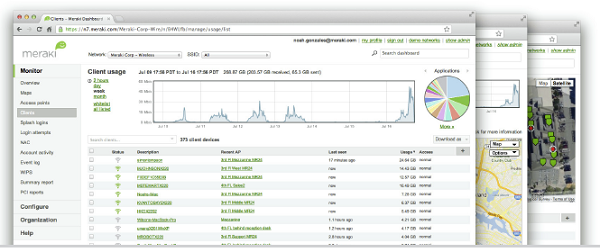
Cisco Meraki's cloud based management provides centralized visibility & control over Cisco Meraki's wired & wireless networking hardware, without the cost and complexity of wireless controllers or overlay management systems. Integrated with Cisco Meraki's entire product portfolio, cloud management provides feature rich, scalable, and intuitive centralized management for networks of any size.
Highlights
- Unified visibility and control of the entire network via a single dashboard: wireless, switching, and security appliances
- Streamlines large networks with tens of thousands of endpoints
- Zero-touch provisioning for rapid deployment
- Built-in multi site network management tools
- Automated network monitoring and alerts
- Intuitive interface eliminates costly training or added staff
- Network tagging engine - search and sync settings by tag
- Role-based administration and auditable change logs
- Continuous feature updates delivered from the cloud
- Highly available and secure (PCI / HIPAA compliant)
Cloud Managed Networks
Cisco Meraki's hardware products are built from the ground up for cloud management. As a result, they come out of the box with centralized control, layer 7 device and application visibility, real time web-based diagnostics, monitoring, reporting, and much more.
Cisco Meraki networks deploy quickly and easily, without training or dedicated staff. Moreover, Cisco Meraki provides a rich feature set that provides complete control over devices, users, and applications, allowing for flexible access policies and rich security without added cost or complexity.
Cisco Meraki's cloud management provides the features, security, and scalability for networks of any size. Cisco Meraki scales from small sites to campuses, and even distributed networks with thousands of sites. Cisco Meraki devices, which self-provision via the cloud, can be deployed in branches without IT. Firmware and security signature updates are delivered seamlessly, over the web. With the cloud, branches can automatically establish secure VPN tunnels between one another with a single click.
With a secure, PCI and HIPAA compliant architecture and fault tolerant design that preserves local network functionality during WAN outages, Cisco Meraki is field proven in high security and mission critical network applications.
Cloud Management Architecture
Cisco Meraki's architecture provides feature rich network management without on-site management appliances or WiFi controllers.
Every Cisco Meraki device - including wirelesss access points, Ethernet switches, and security appliances - connects over the Internet to Cisco Meraki's datacenters, which run Cisco Meraki's cloud management platform. These connections, secured via SSL, utilize a patented protocol that provides real time visibility and control, yet uses minimal bandwidth overhead (typically 1 kbps or less.)
In place of traditional command-line based network configuration, Cisco Meraki provides a rich web based dashboard, providing visibility and control over up to tens of thousands of Cisco Meraki devices, anywhere in the world. Tools, designed to scale to large and distributed networks, make policy changes, firmware updates, deploying new branches, etc. simple and expedient, regardless of size or location. Cisco Meraki's real time protocols combine the immediacy of on-premise management applications with the simplicity and centralized control of a cloud application.
Every Cisco Meraki device is engineered for cloud management. Specifically, this means that Cisco Meraki devices are designed with memory and CPU resources to perform packet processing, QoS, layer 3-7 security, encryption, etc. at the network edge. As a result, no network traffic passes through the cloud, with the cloud providing management functionality out of the data path. This architecture enables networks to scale horizontally, adding capacity simply by adding more endpoints, without concern for centralized bottlenecks or chokepoints. Equally important, since all packet processing is performed on premise, end-user functionality is not compromised if the network's connection to the cloud is interrupted.
Cisco Meraki's cloud platform is designed to spread computation and storage across independent server clusters in geographically isolated datacenters. Any server or datacenter can fail without affecting customers or the rest of the system. Additionally, Cisco Meraki's datacenter design is field proven to support tens of thousands of endpoints.
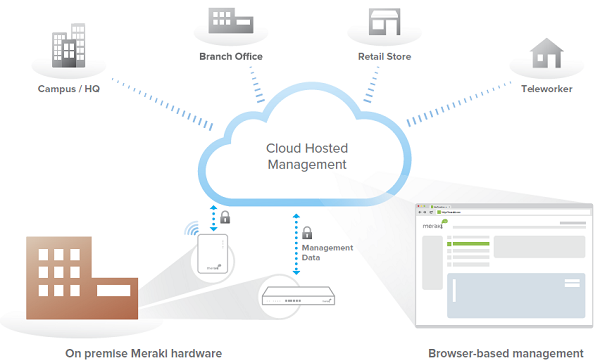
Powerful Insight and Troubleshooting Tools
Cisco Meraki's cloud architecture delivers powerful insight and includes live tools integrated directly into the dashboard, giving instant analysis of performance, connectivity, and more. Using live tools, network administrators no longer need to go on site to perform routine troubleshooting tests. Visibility into devices, users, and applications gives administrators the information needed to enforce security policies and enable the performance needed in today's demanding network environments.
Troubleshooting tools such as ping, traceroute, throughput, and even live packet captures are integrated directly into the Cisco Meraki dashboard, dramatically reducing resolution times and enabling troubleshooting at remote locations without on-site IT staff.

Layer 7 application visibility
|
Integrated multi-site management
Automatic E-mail Alerts |
Live Troubleshooting Tools
User and Device Fingerprints
Scheduled Firmware Updates |
Out-of-Band Control Plane
Cisco Meraki's out-of-band control plane separates network management data from user data. Management data (e.g., configuration, statistics, monitoring, etc.) flows from Cisco Meraki devices (wireless access points, switches, and security appliances) to Cisco Meraki's cloud over a secure Internet connection. User data (web browsing, internal applications, etc.) does not flow through the cloud, instead flowing directly to its destination on the LAN or across the WAN.
|
Advantages of an out of band control plane:
What happens if a network loses connectivity to the Cisco Meraki cloud?
While Cisco Meraki's cloud is unreachable, management, monitoring, and hosted services are temporarily unavailable:
|
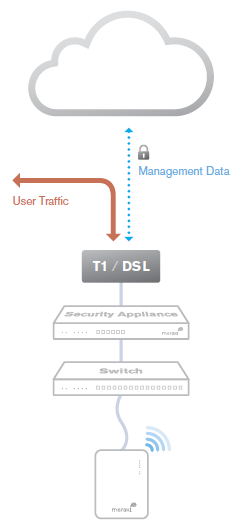 |
Cisco Meraki Datacenter Design
Cisco Meraki's cloud management service is colocated in tier-1, SAS70 type II certified datacenters. These datacenters feature state of the art physical and cyber security and highly reliable designs. All Cisco Meraki services are replicated across multiple independent datacenters, so that customer-facing services fail over rapidly in the event of a catastrophic datacenter failure.
Redundancy
Availability Monitoring
Disaster Recovery
Cloud Services Security
Physical Security
|
Out-of-Band Architecture
Disaster Preparedness
Environmental Controls
Certification
Service Level Agreement
|
Security Tools for Administrators
In addition to Cisco Meraki's secure out-of-band architecture and hardened datacenters, Cisco Meraki provides a number of tools for administrators to maximize the security of their network deployments. These tools provide optimal protection, visibility, and control over your Cisco Meraki network.
Two-factor authentication
Two-factor authentication adds an extra layer of security to an organization's network by requiring access to an administrator's phone, in addition to her username and password, in order to log in to Cisco Meraki's cloud services. Cisco Meraki's two factor authentication implementation uses secure, convenient, and cost effective SMS technology: after entering their username and password, an administrator is sent an a one-time passcode via SMS, which they must enter before authentication is complete. In the event that a hacker guesses or learns an administrator's password, she still will not be able to access the organization's account, as the hacker does not have the administrator's phone. Cisco Meraki includes two-factor authentication for all enterprise users at no additional cost.
Password policies
Organization-wide security policies for Cisco Meraki accounts help protect access to the Cisco Meraki dashboard. These tools allow administrators to:
- Force periodic password changes (e.g., every 90 days)
- Require minimum password length and complexity
- Lock users out after repeated failed login attempts
- Disallow password reuse
- Restrict logins by IP address
Role-based administration
Role-based administration lets supervisors appoint administrators for specific subsets of an organization, and specify whether they have read-only access to reports and troubleshooting tools, administer managed guest access, or can make configuration changes to the network. This minimizes the chance of accidental or malicious misconfiguration, and restricts errors to isolated parts of the network.
Configuration change alerts
The Cisco Meraki system can automatically send human-readable email and text message alerts when configuration changes are made, enabling the entire IT organization to stay abreast of new policies. Change alerts are particularly important with large or distributed IT organizations.
Configuration and login audits
Cisco Meraki logs the time, IP, and approximate location (city, state) of logged in administrators. A searchable configuration change log indicates what configuration changes were made, who they were made by, and which part of the organization the change occurred in.
SSL certificates
Cisco Meraki accounts can only be accessed via https, ensuring that all communication between an administrator's browser and Cisco Meraki's cloud services is encrypted.
Idle Timeout
30 seconds before being logged out, users are shown a notice that allows them to extend their session. Once time expires, users are asked to log in again.
Specifications:
Interfaces
- 48 × 10/100/1000BASE-T Ethernet (RJ45) with auto-MDIX crossover
- 802.3af/802.3at Power-over-Ethernet (PoE/PoE+) on MS210-48LP includes 370W, MS210-48FP includes 740W, available on all ports (maximum of 30W per port for PoE+). Supports Cisco redundant power system (RPS2300).
- 4 × 1GbE SFP interfaces for uplink
- 2 × Stacking interfaces
- Auto negotiation and crossover detection
Management
- Managed via the cloud using the Meraki dashboard
- Integrated with Meraki Wireless and complete portfolio of IT products and solutions
- No-touch remote deployment (no staging needed)
- Detailed historical per-port and per-client usage statistics
- DHCP, client, and hostname fingerprinting
- SNMPd and SYSLOG support for integration with other network management solutions
- Seamless over-the-web firmware upgrades with scheduling & control
Remote diagnostics
- Email, SMS and Mobile push notification alerts
- Cable testing and link failure detection with alerting
- Live remote packet capture
- Dynamic and interactive network discovery and topology
- Aggregated event logs with instant search
Flexible stacking
- Physical stacking of up to 8 switches with 80 Gbps stack bandwidth on all models
- Virtual stacking supports thousands of switch ports in a single logical stack for unified management, monitoring, and configuration
Ethernet switching capabilities
- 802.1p Quality of Service prioritization
- 802.1Q VLAN tagging with 4,095 addressable tags
- 802.1w, 802.1D Rapid Spanning Tree Protocol (RSTP, STP)
- Broadcast storm control
- 802.1ab Link Layer Discovery Protocol (LLDP) and Cisco Discovery Protocol (CDP)
- 802.3ad link aggregation with up to 8 ports per aggregate, Multichassis aggregates supported on stacked switches
- IGMP snooping for multicast filtering
- MAC forwarding entries: 16K on 24-port models, 32K on 48-port models
Security
- Integrated two-factor authentication for Dashboard management
- Role-based access control (RBAC) with granular device and configuration control
- Corporate wide password policy enforcement
- IEEE 802.1X RADIUS, hybrid authentication and RADIUS server testing
- MAC-based RADIUS authentication (MAB)
- Port security: Sticky MAC, MAC whitelisting
- DHCP snooping, detection and blocking
- STP Enhancements: BPDU guard, Root guard
- IPv4 ACLs
Power over Ethernet:
- 802.3af (PoE) 15.4 W per port and 802.3at (PoE+) 30 W per port
- Maximum PoE output MS210-48LP: 370W, MS210-48FP: 740W
- PoE available on all ports simultaneously
Performance
- Non-blocking switching fabric
- Switching capacity: 128Gbps (24-port models), 176Gbps (48-port models)
- Forwarding rate (mpps): 41.67 (24-port models), 77.38 (48-port models)
- Jumbo Frame Support (9578 byte Ethernet frame)
- Flow control support
Layer 3
- Static Routing (maximum of 16 static routes supported)
- DHCP Relay
Power
- Power input: 100 - 240 VAC, 47-63 Hz
- Power consumption: 15 - 448 W
- RPS interface: Requires RPS-2300 chassis, see Cisco RPS-2300 Datasheet for further information
Mounting
- 1U Rack-mountable with included rack mount hardware
- 2-post front mounting options available
- Desktop-mountable with included feet
Environment
- Operating temperature: 32°F to 104°F (0°C to 40°C)
- Humidity: 5 to 95% non-condensing
- MS225-24, MS225-48 feature fanless operation
Regulatory
- CSA-US (US, Canada)
- FCC (USA)
- IC (Canada)
- CE (Europe)
- RCM (Australia/New Zealand)
- RoHS
Warranty
- Full lifetime hardware warranty with next-day advanced replacement included
MTBF at 25°C 439,585
- MS210-48-HW: 439,585
- MS210-48LP-HW: 381,015
- MS210-48FP-HW: 320,555
Physical dimensions (H×W×D)
- MS210-48-HW: 1.72 x 19.08 x 9.84"(4.38 x 48.46 x 25cm)
- MS210-48LP-HW: 1.72” x 19.08” x 13.38” (4.38 x 48.46 x 34cm)
- MS210-48FP-HW: 1.72” x 19.08” x 13.38” (4.38 x 48.46 x 34cm)
Physical Weight
- MS210-48-HW: 8.78 lb (3.98 kg)
- MS210-48LP-HW: 9.63 lb (4.37 kg)
- MS210-48FP-HW: 9.63 lb (4.37 kg)
| Access Switches | |
| MS210-48-HW | Cisco Meraki MS210-48 1G L2 Cld-Mngd 48x GigE Switch |
| MS210-48LP-HW | Cisco Meraki MS210-48FP 1G L2 Cld-Mngd 48x GigE 740W PoE Switch |
| MS210-48FP-HW | Cisco Meraki MS210-48LP 1G L2 Cld-Mngd 48x GigE 370W PoE Switch |
| Cisco Meraki Licenses and Support | |
| LIC-MS210-48-1YR | Cisco Meraki MS210-48 Enterprise License and Support, 1 Year |
| LIC-MS210-48-3YR | Cisco Meraki MS210-48 Enterprise License and Support, 3 Year |
| LIC-MS210-48-5YR | Cisco Meraki MS210-48 Enterprise License and Support, 5 Year |
| LIC-MS210-48-7YR | Cisco Meraki MS210-48 Enterprise License and Support, 7 Year |
| LIC-MS210-48-10YR | Cisco Meraki MS210-48 Enterprise License and Support, 10 Year |
| LIC-MS210-48LP-1YR | Cisco Meraki MS210-48LP Enterprise License and Support, 1 Year |
| LIC-MS210-48LP-3YR | Cisco Meraki MS210-48LP Enterprise License and Support, 3 Year |
| LIC-MS210-48LP-5YR | Cisco Meraki MS210-48LP Enterprise License and Support, 5 Year |
| LIC-MS210-48LP-7YR | Cisco Meraki MS210-48LP Enterprise License and Support, 7 Year |
| LIC-MS210-48LP-10YR | Cisco Meraki MS210-48LP Enterprise License and Support, 10 Year |
| LIC-MS210-48FP-1YR | Cisco Meraki MS210-48FP Enterprise License and Support, 1 Year |
| LIC-MS210-48FP-3YR | Cisco Meraki MS210-48FP Enterprise License and Support, 3 Year |
| LIC-MS210-48FP-5YR | Cisco Meraki MS210-48FP Enterprise License and Support, 5 Year |
| LIC-MS210-48FP-7YR | Cisco Meraki MS210-48FP Enterprise License and Support, 7 Year |
| LIC-MS210-48FP-10YR | Cisco Meraki MS210-48FP Enterprise License and Support, 10 Year |
| Cisco Meraki Accessories | |
| MA-PWR-CORD-US | Cisco Meraki AC Power Cord for MX and MS (US Plug) |
| MA-SFP-1GB-TX |
Cisco Meraki 1 GbE SFP Copper Module |
| MA-SFP-1GB-SX | Cisco Meraki 1 GbE SFP SX Fiber Transceiver |
| MA-SFP-1GB-LX10 | Cisco Meraki 1 GbE SFP LX Fiber Transceiver |
| MA-CBL-40G-50CM | Cisco Meraki 40GbE QSFP Cable, 0.5 Meter |
| MA-CBL-40G-1M | Cisco Meraki 40GbE QSFP Cable, 1 Meter |
| MA-CBL-40G-3M | Cisco Meraki 40GbE QSFP Cable, 3 Meter |
| PWR-RPS2300 | Cisco Redundant Power System 2300 and Blower,No Power Supply |
Chủ sở hữu Website http://thietbicisco.vn/ thuộc về:
CÔNG TY TRÁCH NHIỆM HỮU HẠN THƯƠNG MẠI DỊCH VỤ KẾT NỐI MẠNG
Tên quốc tế: KET NOI MANG SERVICE TRADING COMPANY LIMITED
Tên viết tắt: KET NOI MANG SERVICE TRADING CO.,LTD
Số chứng nhận ĐKKD: 0314815571
Ngày cấp: 03/01/2018, nơi cấp: Sở KH & ĐT TPHCM
Người đại diện: VĂN NHẬT TÂN
Địa chỉ: Số 36/34 Đường Nguyễn Gia Trí, Phường 25, Quận Bình Thạnh, Thành phố Hồ Chí Minh, Việt Nam
Địa chỉ giao dịch: 1061 Phạm Văn Đồng, Phường Linh Tây, Thành Phố Thủ Đức, Thành phố Hồ Chí Minh, Việt Nam
Điện thoại: 84.028.35125568
Hotline: 09 014 014 86
Website: http://ketnoimang.vn | http://thietbifortinet.vn | http://thietbicisco.vn | http://knmrack.vn
Email: sales@ketnoimang.vn













